Contact Details
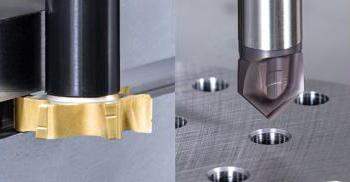
Tungaloy has added 69 additional exchangeable heads to its TungMeister exchangeable-head end milling tool system. The expansion covers GH730-grade thread milling head line and AH715-grade chamfering and rough end milling head lines.
TungMeister system offers a variety of solid carbide milling head options, combined with different shanks, providing milling solutions for end milling, high-feed face milling, slot milling, thread milling, shoulder milling, profile milling, and chamfer milling in all material groups. Furthermore, the exchangeable milling heads allow quick setup time as short as one tenth of the time for typical solid carbide end mills to be replaced, enabling the reductions of manufacturing costs and tooling inventories.
This expansion increases GH730 grade options of the VST and VTB slot milling heads and the VTR thread milling heads. A PVD grade consisting of extremely wear-resistant coating layer, combined with a tough carbide substrate dedicated to the coating, GH730 provides much better wear resistance than the previous generation GH130. These characteristics provide the grade with long, predictable tool life during threading and grooving operations.
Also increased are AH715 grade options of the VCP chamfering heads and the VEE-R rough milling heads. Wear resistant, AH715 grade provides long tool life and process security during high feed milling.
Related Glossary Terms
- chamfering
chamfering
Machining a bevel on a workpiece or tool; improves a tool’s entrance into the cut.
- feed
feed
Rate of change of position of the tool as a whole, relative to the workpiece while cutting.
- gang cutting ( milling)
gang cutting ( milling)
Machining with several cutters mounted on a single arbor, generally for simultaneous cutting.
- grooving
grooving
Machining grooves and shallow channels. Example: grooving ball-bearing raceways. Typically performed by tools that are capable of light cuts at high feed rates. Imparts high-quality finish.
- milling
milling
Machining operation in which metal or other material is removed by applying power to a rotating cutter. In vertical milling, the cutting tool is mounted vertically on the spindle. In horizontal milling, the cutting tool is mounted horizontally, either directly on the spindle or on an arbor. Horizontal milling is further broken down into conventional milling, where the cutter rotates opposite the direction of feed, or “up” into the workpiece; and climb milling, where the cutter rotates in the direction of feed, or “down” into the workpiece. Milling operations include plane or surface milling, endmilling, facemilling, angle milling, form milling and profiling.
- physical vapor deposition ( PVD)
physical vapor deposition ( PVD)
Tool-coating process performed at low temperature (500° C), compared to chemical vapor deposition (1,000° C). Employs electric field to generate necessary heat for depositing coating on a tool’s surface. See CVD, chemical vapor deposition.
- threading
threading
Process of both external (e.g., thread milling) and internal (e.g., tapping, thread milling) cutting, turning and rolling of threads into particular material. Standardized specifications are available to determine the desired results of the threading process. Numerous thread-series designations are written for specific applications. Threading often is performed on a lathe. Specifications such as thread height are critical in determining the strength of the threads. The material used is taken into consideration in determining the expected results of any particular application for that threaded piece. In external threading, a calculated depth is required as well as a particular angle to the cut. To perform internal threading, the exact diameter to bore the hole is critical before threading. The threads are distinguished from one another by the amount of tolerance and/or allowance that is specified. See turning.
- wear resistance
wear resistance
Ability of the tool to withstand stresses that cause it to wear during cutting; an attribute linked to alloy composition, base material, thermal conditions, type of tooling and operation and other variables.



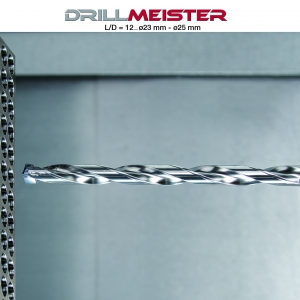



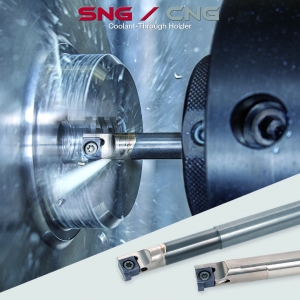
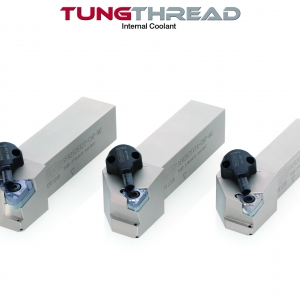
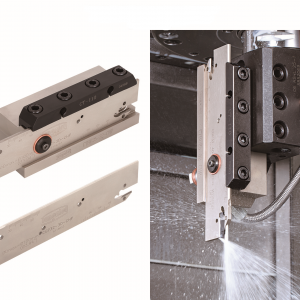
 PRODUCTS
PRODUCTS

